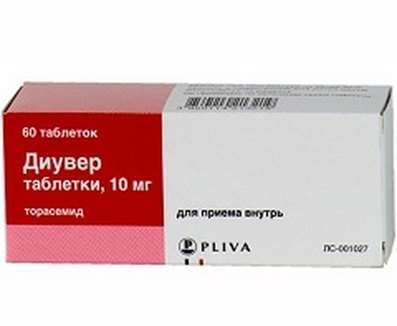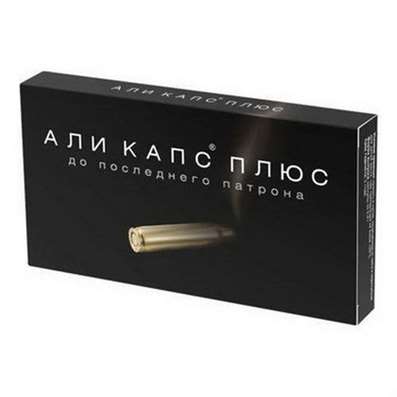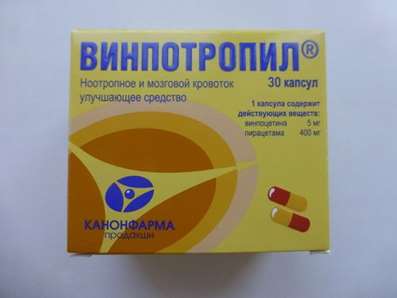Instruction for use: Menopur
I want this, give me price
ATX Code G03GA02 Menotropins
Active substance: Menotropins
Pharmacological group
Follicle-stimulating agent [Hormones of the hypothalamus, pituitary gland, gonadotropins and their antagonists]
Nosological classification (ICD-10)
E23.0 Hypopituitarism
Kalmann's syndrome, Infantilism pituitary, Dwarfism is cerebral-pituitary, Cachexia pituitary, Cachexia diencephalo-pituitary, Anovulatory disorders, Symmonds disease, Secondary hypogonadism in men, Secondary hypogonadotropic hypogonadism, Hypogenitalism, Hypogonadism, Hypogonadism hypogonadotropic, Hypogonadism of the pituitary, Hypogonadism in men, Hypogonadotropic hypogonadism, Hypopituitarism, Pituitary insufficiency, Lack of growth in children with hypopituitarism, Pangypopituitarism, Primary hypogonadism, Primary hypogonadotropic hypogonadism, Shihan Syndrome, Shihina's Syndrome, Symmonds-Glinsky disease, Laron's dwarfism, Sheena's Syndrome, Syndrome of a fertile eunuch
E28.2 Polycystic ovary syndrome
Stein-Levental Syndrome, Polycystic ovary, Polycystic ovary syndrome, Stein-Levental Syndrome, Sclerokrostoznaya disease of the ovaries, Stein-Leventhal syndrome, Polycystic ovary syndrome
E29 Testicular dysfunction
Hypofunction of gonads in men, Androgenic dysfunction, Dysfunction of the sex glands, Dysfunction of gonads in men, Underdevelopment of the genitals in men, Primary hypogonadism in men
N46 Male infertility
Azoospermia, Asthenospermia, Infertility, Infertility male, Marriage is infertile, Dispersion, Violations of spermatogenesis, Oligoastenozoospermia III-IV stage, Oligoastenospermia, Oligozoospermia, Oligospermia, Disorders of testicular functions, Spermatogenesis disorders, Inhibition of spermatogenesis, Yang syndrome
N97 Female infertility
Female infertility in anovulation, Hyperprolactinemic infertility, Hyperprolactinaemia with infertility, Endocrine infertility, Infertility due to hypothalamic-pituitary dysfunction, Infertility infertility, Infertility, Infertility on the background of hyperprolactinaemia, Functional infertility, Marriage is infertile, Infertility of ovarian genesis, Stimulation of the growth of a single follicle
Z31.1 Artificial insemination
Fence of egg, ICSI (Intra Cytoplasmic Sperm Injection), Controlled ovarian stimulation, Controlled superovulation, Controlled superovulation in artificial insemination, Treatment of insemination, Fertilization artificial, Premature ovulation, The IVF program, The program of in vitro fertilization, Superovulation
Composition
Lyophilizate for solution for intramuscular administration 75 IU FSH + 75 IU LH 1 fl.
active substance:
Menotropins 75 ME
Which corresponds to 75 IU FSH, 75 ME LH
Auxiliary substances: lactose monohydrate - 20 mg; Polysorbate-20 - 0.1 mg; Sodium hydroxide 0.0008-0.003 mg; Hydrochloric acid 0-0,0005 mg
Ampoule solvent (0.9% solution of sodium chloride): sodium chloride - 9 mg, hydrochloric acid 0.007 mg - 0.02 mg; Water for injection - up to 1 ml
Description of dosage form
Lyophilizate: white or almost white lyophilized mass; Solvent: colorless clear solution.
pharmachologic effect
Pharmacological action - gonadotropic.
Pharmacodynamics
Menopur® is a preparation of human menopausal gonadotropin (MHC) of high purity. The drug belongs to the group of menotropins, contains FSH and LH in a ratio of 1: 1. Extracted from the urine of women in the postmenopausal period. Menopur® stimulates the growth and maturation of ovarian follicles, increases the level of estrogen, stimulates the proliferation of the endometrium. Treatment with Menopur® is usually combined with the administration of human hCG (hCG) preparations to induce the final maturation of follicles and the onset of ovulation.
Pharmacokinetics
Suction. Cmax FSH in plasma is achieved within 7 hours after SC or IM.
Distribution. Vd after repeated doses of 150 IU for 7 days is 8.9 ± 3.5 IU / L with p / c injection and 8.5 ± 3.2 IU / L with a / m introduction.
Metabolism. Not studied.
Excretion. The concentration of FSH in the blood decreases gradually. T1 / 2 is (30 ± 11) h for n / k and (27 ± 9) h for the v / m introduction. It is excreted mainly by the kidneys.
Indications
Among women:
Anovulation in the syndrome of polycystic ovaries (with ineffective clomiphene therapy);
Controlled ovarian hyperstimulation in order to induce the growth of multiple follicles during assisted reproductive technologies (ART).
For men:
Stimulation of spermatogenesis with azoospermia or oligoastenospermia caused by primary or secondary hypogonadotropic hypogonadism (in combination with hCG preparations).
Contraindications
Persistent enlargement of the ovaries, ovarian cyst (not caused by the syndrome of polycystic ovaries);
Anomalies in the development of genital organs, uterine fibroids, incompatible with pregnancy;
Metrorrhagia and other bleeding of unclear etiology;
Cancer of the ovaries, uterus and / or breast;
Prostate cancer, testicular tumor;
High concentration of FSH in primary ovarian failure;
Pregnancy and lactation;
Tumors of the hypothalamic-pituitary region;
Androgen-dependent tumors;
Hypersensitivity to the drug or its components.
In the presence of one of the listed diseases, before taking the drug should always consult a doctor.
With caution: see "Special instructions".
pregnancy and lactation
Menopur® is contraindicated in pregnant and lactating women.
Side effects
Often (from> 1/100 to <1/10)
On the part of the genitourinary system: ovarian hyperstimulation syndrome (OCS), abdominal pain.
From the side of the nervous system: headache.
From the digestive system: abdominal pain, nausea, flatulence.
General reactions and reactions at the site of administration: pain, swelling and irritation at the injection site.
Men can have gynecomastia.
The most serious side effect is OHS and associated complications: thromboembolic syndrome and ovarian twisting. If any of the side effects listed in the manual are aggravated, or any other side effects not indicated in the instructions develop, a doctor should be informed.
Interaction
The drug should not be mixed in the same syringe with other drugs.
Sharing of the drug Menopur® and clomiphene citrate can lead to increased follicle growth, although there is no clinical evidence of a combined use of these drugs. When GnRH agonists are prescribed to reduce their own pituitary activity, Menopur® should be given at higher doses to achieve the desired follicular reaction.
Dosing and Administration
Intramuscular or subcutaneous .Subcutaneous route of administration is preferable, because It provides the greatest absorption of the drug substance. Treatment with the drug should be carried out only under the supervision of a doctor who has the appropriate specialization and experience in treating infertility.
Recommendations for the preparation of the solution: the injection solution must be prepared immediately prior to administration using the supplied solvent. Avoid sudden shaking. The solution is not suitable for use if it contains undissolved particles or it is opaque. The dose of the drug described below is the same for both the subcutaneous and intramuscular route of administration.
The dose should be selected individually depending on the response of the ovaries. For this purpose, it is necessary to monitor the ovarian response to the therapy in the form of ultrasound alone, and preferably, in combination with a dynamic measurement of the concentration of estradiol.
In women, unless otherwise prescribed, the following treatment regimen is recommended:
Anovulation (including polycystic ovary syndrome):
The goal of treatment with Menopur® is the development of a mature follicle, from which the oocyte will be released after administration of hCG preparations. Treatment usually begins in the first 7 days of the menstrual cycle with a dose of 75-150 IU (1-2 vials of the drug) per day for a week. In the absence of ovarian response, the dose is gradually increased by 37.5 IU no more frequently than 1 time per week before the registration of an increase in the level of estrogens in the blood or the growth of follicles, but no more than 75 ME. The maximum daily dose should not exceed 225 ME. If the therapeutic response is not reached within 4 weeks, discontinue treatment and start a new cycle with higher initial doses. Patients are advised to use barrier methods of contraception before the next menstrual period. If an optimal response to the therapy is achieved, a single injection of 5000-10000 IU hCG should be made the day after the last dose of Menopur®. The patient is recommended to have sexual intercourse or an intrauterine insemination procedure on the day of administration of hCG and the day after the administration.
To stimulate the growth of multiple follicles in ART, Menopur® should be administered approximately 2 weeks after starting treatment with GnRH agonists. The recommended initial daily dose of Menopur® is 150-225 IU for the first 5 days of treatment. In the absence of ovarian response, the dose may gradually increase. The dose change should not exceed 150 IU at a time. The maximum daily dose of Menopur® should not exceed 450 ME, in most cases it should not be administered for more than 20 days. If the treatment regimen does not presuppose the use of GnRH agonists, the introduction of Menopur® should be started on the 2nd or 3rd day of the menstrual cycle. The method of administration and the same doses of the preparation as described above are recommended. When an optimal response to the therapy is achieved, a single injection of 10,000 IU hCG should be made to induce the final maturation of the follicle and prepare for the release of the full egg. Patients should be carefully observed within 2 weeks after the administration of hCG. If overreaction to treatment with the drug Menopur® therapy should be discontinued, abandon the introduction of hCG and use barrier methods of contraception until the next menstrual period.
In men, unless otherwise prescribed, the following treatment regimen is recommended:
When hypogonadotropic hypogonadism for the stimulation of spermatogenesis, the preparation Menopur® is prescribed if the previous therapy with hCG drugs caused only an androgenic reaction without signs of increased spermatogenesis. In this case, the treatment is continued by administering 2000 IU hCG 2 times per week, along with injections of Menopur® 75 ME 3 times per week. Treatment for this regimen should be continued for a minimum of 4 months, if ineffective, treatment is continued by injecting a hCG preparation of 2,000 IU twice a week and 150 IU of Menopur® 3 times a week. The state of spermatogenesis should be assessed on a monthly basis, and if there are no positive results for the next 3 months, treatment should be discontinued.
With idiopathic normogonadotropic oligospermia, 5000 ME hCG and 75-150 IU of Menopur® are administered weekly 3 times a week for 3 months.
To stimulate spermatogenesis, 1000-3000 IU hCG is administered 3 times a week before the normalization of testosterone concentration in the blood. After that, for several months 3 times a week for 75-150 ME of Menopur®.
Overdose
Symptoms: cases of overdose are not known, however, in such situations, development of HNS and thromboembolic complications should be expected. Symptoms of CHD are ovarian enlargement, abdominal pain, nausea, vomiting, diarrhea, weight gain, oliguria, ascites, hydrothorax, hemoperitoneum, hemoconcentration, dyspnea
Treatment: usually do not require additional treatment and pass independently for 2-3 weeks. For more information, see the section "Special instructions".
special instructions
Before the start of treatment, it is recommended to perform an analysis of the sperm of the sexual partner; If necessary, to treat hypothyroidism, insufficiency of the adrenal cortex, hyperprolactinaemia, tumors of the pituitary or hypothalamus. Gynecological examination with ovarian enlargement is carried out very carefully to avoid rupture of ovarian cysts.
After stimulation of maturation of follicles and ovulation, the possibility of multiple pregnancy during natural conception increases. In the case of ART, the likelihood of multiple pregnancies depends on the number of oocytes administered.
It should be borne in mind the possibility of an ectopic pregnancy, especially with tubal ligation in the anamnesis. The frequency of early and spontaneous abortions in pregnancy after treatment with the drug Menopur® is higher than in healthy patients, but comparable to that of infertility of another etiology.
There is no relationship between the use of Menopur® and the occurrence or development of benign or malignant neoplasms of reproductive organs.
The frequency of congenital anomalies in neonates during ART is slightly higher than in conception by natural means. However, this is more likely due to the individual characteristics of the parents (age, sperm characteristics, etc.) than with the preparation of Menopur®.
It should be remembered that patients with a body mass index ≥30 kg / m2 increase the risk of developing thromboembolic complications.
Treatment with drugs of menotropins can lead to the development of OHSS, which becomes clinically pronounced after the administration of drugs hCG and is manifested in the formation of large ovarian cysts. This is combined with the accumulation of fluid in the abdominal cavity (ascites), pleural cavity (hydrothorax), accompanied by a decrease in the volume of excreted urine (oliguria), a decrease in blood pressure (hypotension) and clotting of blood vessels (thromboembolic phenomenon). Most often, CHD occurs on the 7-10th day after ovulation, stimulated by the administration of hCG, (less often - during ART).
At the first signs of SWC (abdominal pain, palpated by a doctor or ultrasound-defined volume formations in the lower abdomen), treatment should be stopped immediately!
In the presence of pregnancy, the above-described phenomena become aggravated, and their duration increases, which can endanger the life of the patient.
In cases of development of HNS, it is not necessary to administer the drug BHH for the purpose of ovulation. When carrying out ART, the risk of an OHSS may be reduced if aspirates the contents of all follicles before ovulation.
In the period of treatment in men with a high concentration in the blood of FSH, menotropins are ineffective.
Menopur® does not adversely affect the ability to drive and other mechanisms.
Form of issue
Lyophilizate for solution for injection.
Vial with lyophilizate: 75 I lyophilizate per vial of colorless glass type 1, sealed with a rubber stopper with aluminum obkatkoy and a cap type "flip-off."
Ampoule with solvent: 1 ml of solution in ampoules of colorless glass type 1 with possible color coding as a color point and / or one or several rings. By 5 fl. Lyophilizate and 5 ampoules of solvent into a cardboard cell package. 1 or 2 cell packs in a cardboard box.
Terms of leave from pharmacies
On prescription.
storage conditions
In the dark place at a temperature of no higher than 25 ° C.
Keep out of the reach of children.
Shelf life
2 years.
Do not use after the expiry date printed on the package.

 Cart
Cart





